-
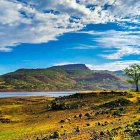 Experience Bliss and Enjoyable Moments in the Shangri La that is Pawna Lake:Be Close to Nature Enjoy & Fun Filled Activities (2022)
Experience Bliss and Enjoyable Moments in the Shangri La that is Pawna Lake:Be Close to Nature Enjoy & Fun Filled Activities (2022)
-
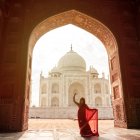 Embark on a Journey to Discover India. Your Guide to the Best Places to Visit in India in Every Season (2020)
Embark on a Journey to Discover India. Your Guide to the Best Places to Visit in India in Every Season (2020)
-
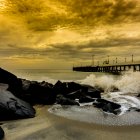 समुद्र तट, प्रकृति का जादुई सौंदर्य, अनूठा आकर्षण सब कुछ है - पांडिचेरी यात्रा के दौरान वहाँ क्या देखें, क्या खाएं, कहां खरीदारी करें: पांडिचेरी में घूमने के 10 सर्वश्रेष्ठ स्थान (2020)
समुद्र तट, प्रकृति का जादुई सौंदर्य, अनूठा आकर्षण सब कुछ है - पांडिचेरी यात्रा के दौरान वहाँ क्या देखें, क्या खाएं, कहां खरीदारी करें: पांडिचेरी में घूमने के 10 सर्वश्रेष्ठ स्थान (2020)
Tips on Monsoon Travel in India
Keeping Yourself Healthy During Monsoon Travels

August is usually the time when India experiences monsoons in most parts of the country right from the beginning of mid of June through September end, which implies that you can expect heavy rainfall in a large part of the country during this time. Although it’s off-season from a tourism perspective, you can still travel. Monsoons in India’s a lovely time that provides respite from the scorching heat, however, it also brings its share of health challenges and monsoon woes. Here are some vital tips on how to steer clear of health issues during this period and make the most of your travel.
Monsoon isn’t a good time to indulge your taste buds in street food, as food and vegetables are prone to contaminants. Given that the rainy season is the opportune time for mosquitoes, its best to apply a strong repellent to avoid being bitten and keep them away! Avoid wading through dirty water on the streets as much as possible, to avoid both passing traffic spraying you or avoiding infections. Keep your feet dry and avoid wearing wet socks or shoes for long. If you do get caught in the rains, take a beta-dine bath as soon as you can to avoid skin problems. It is good to have a bath twice a day during the rainy season, as humidity can pollute your body with sweat and dirt in addition to other toxins.
Keep your body warm & dry to avoid cold and cough, and avoid being in an air-conditioned room in damp clothes or with wet hair. It is best to wear cotton or linen fabrics that are loose and use of talcum powder to prevent sweat accumulation in skin folds is highly recommended.
Eating Right on a Holiday

The best way to avoid getting sick while travelling is to eat only fresh cooked food as cooking eliminates nearly all bacteria and parasites. Avoid eating raw salads, juices or uncooked food, as most likely they’ll be washed with water that could be contaminated. It is best to eat at restaurants or cafes that are top-rated or very busy, as you can expect delicious and safe food there! Avoid spicy & chilly food items, which tend to make your stomach sensitive and prone to digestive troubles. It is good to have probiotics and charcoal tablets in hand, as they boost the good bacteria, improve digestion, enhance natural immunity and prevent dysentery or stop diarrhea by quickly absorbing the pathogens/toxins that lead to indigestion.
India’s got the least meat consumption rate in the world, and it is best to go in for vegetarian fares when on travel to avoid the questionable quality of meats or ending up somewhere where your choice of meat may be banned, go against religious sentiments completely or result in food poisoning! Avoid overeating to go easy on your stomach and immune system. Carry a hand sanitizer with you and wherever possible, use it on your hands!
Avoiding Certain Places during Indian Monsoons
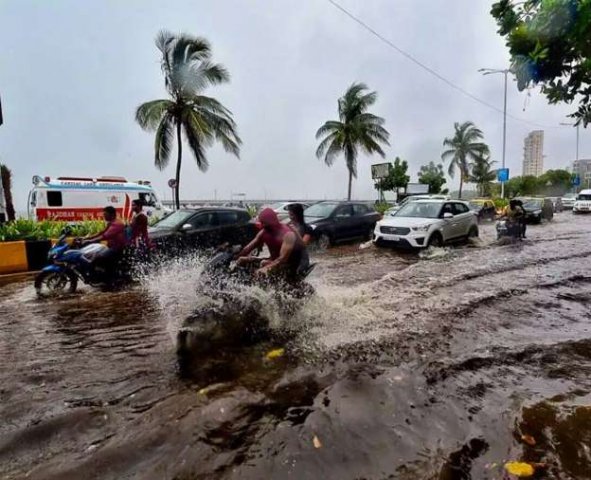
Compared to the rest of the world, monsoons in India is relatively predictable, albeit the Asian weather’s prone to changes at a rapid pace. With two cycles of rainfalls in the country, one that hits the East coast in November and the other that hits the southwest around June, it is important to keep in mind certain points before travelling within the country. Based on which part of the country it is, the wettest months in India are usually June to September. For instance, New Delhi’s the wettest during July through September, while Mumbai received the most rainfall between June-September. Goa’s the wettest from June-August, while Manali’s wet in July and August.
Monsoons in India typically start in early June and go on till October roughly, with rains drying up in North India first and then South India, in addition to Goa receiving the most rainfall. Monsoon in the Southwest part of the country is considered India’s most productive season, which starts typically as thunderstorms, lead to torrential rains, sometimes transforming into cloudbursts from clear blue skies unexpectedly! Areas that are best avoided during monsoons for travel within the country include Port Blair, Dehradun, Thiruvananthapuram, Mumbai, Guwahati, Bengaluru and Shimla.
On the other hand, although the west coast receives lots of rain, places in Kerela like Munnar and Cochin, and most of Goa are spectacular. The lush greenery and swaying palms that dot the countryside here become all the more vivid, the clean, crisp air is invigorating and you will come away with your senses renewed.
Best Places to Visit in India in August
Athirapally, Kerala

A major tourist attraction, Athirapally is popular as the land of forests, rivers and majestic waterfalls. A visual treat, this patch in the Sholayar ranges is intricately tangled with lush green forests, wildlife sanctuaries, tea gardens and sparkling silver cascades during the monsoons. Featured in one of the most popular movies in recent times, Bahubali, Athirapally majestic waterfalls stood out in the movie the most. Situated 60km from Kerala Thrissur District, the Athirapally Falls is 80ft high and 330ft wide, popularly considered India’s Niagara Falls!
Athirapally is best for bird watchers as it is the only spot in the Western Ghats where you can see the four rare species of Hornbill. The perilous pathways to the falls is a treat for alpinists who enjoy adventures. The trek trails are well preserved and there are beautiful views of the falls throughout the way with colourful birds, cheeky monkeys and a rare sighting of the Samba Deer. There are jungle safaris organized by the Tourism Promotion Council between Chalakudy and Malakkappara, spanning over 90km across the Sholayar range through the Kerala rainforests. Some of the popular tourist attractions included in the safari are the Athirapally & Vazhachal Falls, the Kauthuka Park, the Thumboormuzhy Dam, Tea Gardens, Valleys and Butterfly Gardens.
Alibaug, Maharashtra
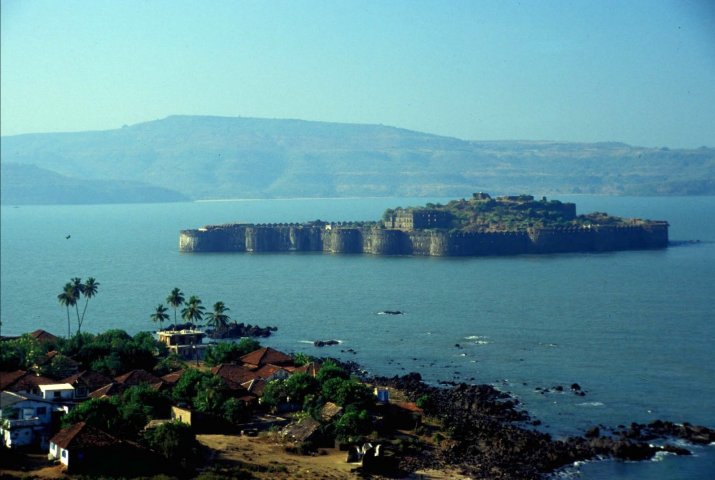
Nestled away in the Konkan region of Maharashtra, the coastal town of Alibaug is home to the Mandwa Beach, most popular for the infinite movie shoots with spectacular views of the Gateway of India from its bay. A popular weekend holiday destination, nicknamed ‘mini Goa’ , Alibaug witnesses the highest footfall through the year in terms of tourism. This quaint little town is situated 110km approx. from Mumbai and brimming with sandy beaches, clear fresh air and an abundance of temples and forts, with ample things to engage in. Aside from its numerous beaches, the Alibaug beach is the most frequented, for its glorious view of the sunrise and sunset, in addition to the Colaba Fort , which was once the foundation of the Maratha Empire and stands proud till date in a well-preserved condition.
Sprinkled with temples galore, some of the most visited temples in Alibaug are the Hanuman Temple, Someshwar Temple and the Shiva Temple, which are typically located atop small hills with beautiful sweeping views of the Konkan coastline. Also known for its citadels from the pre-colonial era, Alibag has the Khanderi, Undheri, Revdanda and the Murud Janjira Forts with a rich history of their own. Further Alibaug’s Magnetic Observatory is yet another popular tourist attraction, amidst the few buildings constructed by the British. One of its kind in the Asian sub-continent, the Observatory is among 13 other observatories set across the world that records geomagnetic date with the use of precise recording instruments.
Alibaug has a variety of water & adventure sports activities that you can enjoy at the Mandwa, Nagaon and Alibaug Beaches that include sea kayaking, parasailing, jet skis and banana boat rides. The place is also well-known for the scuba dives and island trips.
Agumbe, Karnataka

Located in Karnataka’s Shimoga District, Agumbe is a small village also known South India’s Cherrapunji. A rich-biodiversity region with the highest rainfall in South India and the 2nd highest in the country, Agumbe is a picturesque hill station with a bounty of gushing rainfalls and trekking trails. A captivating location which was the backdrop for India’s most popular TV series, ‘Malgudi Days’, Agumbe is also known for its mesmerizing sunsets over the Arabian Sea and houses some of the rarest species of medicinal plants like Garcinia, Diospyros, Ficus, Eugenia, Mysristica and Listsaea. In addition to housing the extensive rain-forest and an assortment of flora and fauna, Agumbe is home to the Rain-forest Research Station as well, the oldest weather station in the country that monitors any changes in the rain-forests exclusively.
Agumbe is also nicknamed ‘Cobra Capital’ for a large number of Cobras found here, in addition to providing ample trekking options that beckon adventure enthusiasts to this offbeat tourist destination. Agumbe is known for its waterfalls with a fascinating view of the surrounding hills and closely located cascades. 445m high and considered one of the highest waterfalls in India, the Kunchikal Falls at Agumbe, cascade on the rocky boulders, with a hydroelectric plant located right underneath it to generate high powered electricity in the region. Then, there’s the Barkana Falls, the 10th highest waterfall in the country in the Balehalli Forest region with a height of 850ft. Other sparkling waterfalls include the Onake Abbi Falls at 400ft, the Koodlu Theertha Falls, and the Jogigundi Falls.
Besides the glorious cascades, other popular tourist attractions in the region include a 14th century temple, the Gopala Krishna Temple that was built as per Vaastu parameters and is renowned for its brilliant sculptures, and the 108 steps from the basement to the Garbha Griha that symbolizes the 108 names of Lord Krishna. The Sunset Point in Agumbe is yet another famous spot at the highest peaks of the Western Ghats that offers a magical view of the setting sun on the horizon of the Arabian Sea, just 10mins walk from the main town.
Diu, Gujarat
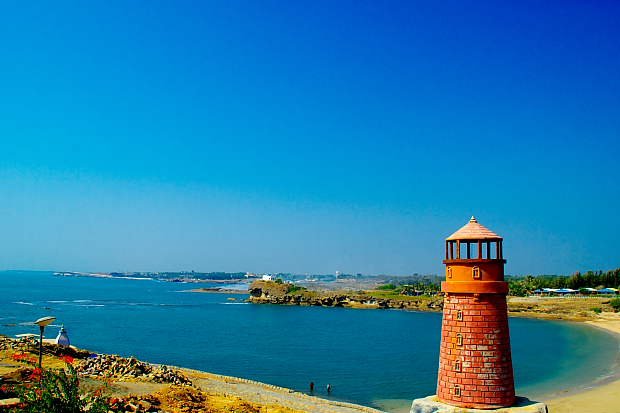
Located near the port of Veraval, a small island that was initially a Portuguese colony and is now guarded by beaches extensively, Diu is at the top rung of the popularity charts with an abundance of beaches along the Gujarat southern coastline.Separated from the mainland by a narrow channels and two small inland communes, Diu is rich with Portuguese heritage and architectural marvels in the presence of St. Paul’s Church and the Diu Fort, that are significant hallmarks of the Portuguese era, making Diu a popular tourist destination. In addition to an interesting line of museums like the Sea Shell Museum, temples, and churches, there’s another interesting place in the list of tourist attractions in Diu, the Vanakbara – a small fishing village with its colourful fishing boats and the hum of its daily chores.
Chiefly renowned for its glorious beaches, magnificent citadels and exotic liquor, Diu’s beaches are a wondrous holiday spot away from the hustle & bustle of a chaotic lifestyle. With soft sand, magical waves, the canopied palms and the faint sounds of church bells in the background, Diu has four beaches in its kitty: Nagoa Beach, Jallandhar Beach, Chakratirth Beach and the Goptimata Beach.
Kanyakumari, Tamil Nadu

A coastal town in Tamil Nadu, Kanyakumari is situated at the southernmost tip of the Indian Peninsula and was initially known at Cape Comorin. Encompassed by mountains and bordered by vibrant coastlines, lined with coconut trees and paddy fields, Kanyakumari boasts of visually elevated patch of hills with rolling valleys and plains in between the sea and the mountain terrain. Considered a significant place in the realm of art, culture and religion since the ancient era, Kanyakumari is the only place in the country where you can witness the sunrise and sunset at the same beach, and it is popular tourist spot not only on account this unique phenomenon but also for its pristine beaches, churches and temples that are quite a crowd puller, making it a busy destination all year round!
Also known as the Bhagvaty Amman or the Kumari Amman, the Kanyakumari Temple is one of the most popular Hindu temples across the country, built in the honor of Goddess Kumari Amman and has nearly all ancient scriptures mentioned in the temple, frequented by people in reverence to the virgin Goddess Kanya Devi. The Vivekananda Rock Memorial is massive and most prestigious monuments in the city surrounded by the Laccadive Sea on all sides and hence one can reach here only by a boat or ferry ride. Built by the Ramakrishna Mission, the Memorial was built to honor Swami Vivekananda, a great philosopher and includes two significant structures – the Vivekananda Mandapam and the Shripada Mandapam with attached meditation halls. Kanyakumari also houses the Saint Poet Thiruvalluvar’s sculpture, one of Tamil Nadu’s greatest poets. The statue stands tall at a height of 133ft, making it one of the biggest monuments in the Asian subcontinent. Besides this, Kanyakumari has other popular attractions like the Gandhi Memorial, the Padmanabhapuram Palace and the Vattakottai Fort.
That’s not all! Aside from its ancient structures and monuments, Kanyakumari enjoys fame for its waterfalls and beaches that are less crowded and the best place to enjoy nature’s beauty. Some of the worth visiting cascades here include the Courtallam Falls, the Olakaruvi Falls and the Thirparappu Falls.
Khajuraho, Madhya Pradesh
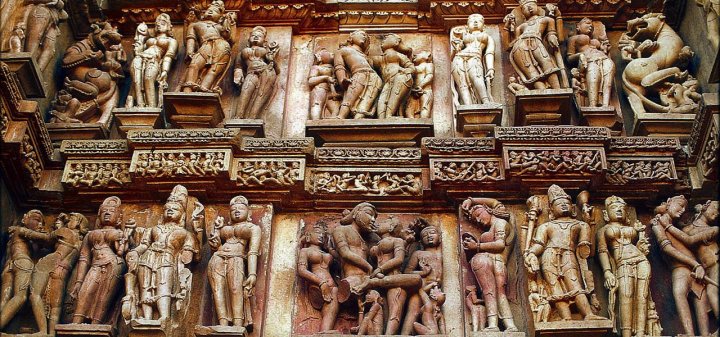
A small town in the Bundelkhand region of Madhya Pradesh, Khajuraho is renowned for its stunning varieties of temples, adorned with expressive and sensuous carvings, all over the world. A magnificent model of Indian architecture with a legacy that goes back to the medieval era, Khajuraho’s temples of Hindu and Jain heritage exhibit the virtuous form of love through the engravings that display passion in the most evocative, yet artistic manner. Built between 950-1050 A.D, the pure provocative nature of these figurines exhibit the blatant irony as against the traditional Indian morals on eroticism, leaving the audience spellbound.
A cultural hotspot in the Chhatarpur District, Khajuraho houses ruins of the magnificent history of ancient India with its popular series of temples built during the Chandela Dynasty and has been accorded the title of UNESCO World Heritage Site. The Temple complex here’s segregated on the basis of their orientation viz-a-viz, the Western and Eastern Groups. From the Western arena, the largest temple Kandariya Mahadeo was built in honour of Lord Shiva, and other temple dedicated to different Hindu Gods and Goddesses. Off a number of temples built within the complex, 6 are built-in reverence to Lord Shiva, 8 to Lord Vishnu, 1 each for Lord Ganesha and Sun God, while 3 were made in honour of Jain Tirthankaras. Each of these temples has been designed intricately with elaborate sculptures and fine architecture.
At the other end, under the Eastern Group, there are 4 Jain temples, namely Adinath, Shantinath, Parasvanath & Ghantai in honour of Jain Tirthankaras. Besides visiting the popular tourist sites in Khajuraho, you can also explore the town’s shopping spots, i.e., the flea markets, of which Gole Market is one, and then there’s City Centre and the Oswal Complex renowned for some delightful souvenirs, boasting of the city’s traditions and culture. Khajuraho’s also famous for its textiles, mostly Sarees that you can sieve through at some of the local emporiums lined on the streets. Then there are the traditional handicrafts and handlooms including tribal artifacts, paintings and brassware that pull crowds, as are the miniature stone-carved replicas of the temple sculptures. You can also check out the local jewelry, neckpieces and earrings brimming the street bazaars in town. You can also enjoy the Light and Sound show at the Western Complex after 6 PM which narrates the life and history of Chandela Dynasty.
Kumarakom, Kerala
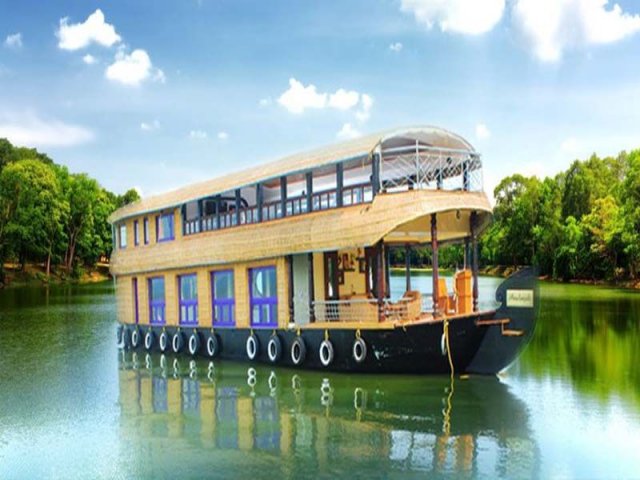
Located on the banks of Vembanad Lake, Kerala’s largest lake is Kumarakom, a cluster of artificial islands, domesticated from the lake. Part of the Kuttanad region, Kumarakom has gorgeous backwaters in addition to Alleppey and, together they form the most significant tourist hub in Kerala. Whether it is the fishing and boating facilities at the Taj Garden Retreat (a sprawling old bungalow-cum-resort), or Waterscapes (a backwater resort of KTDC) with independent cottages built on stilts amidst the coconut groves & panoramic sights of the backwaters, the holiday packages in Kumarakom involve lovely holiday experiences involving houseboats and the traditional Kettuvalloms (rice barges). The Kumarakom Bird Sanctuary spanning 14 acres is a favourite spot for migratory birds and a birdwatcher's heaven. You can see a variety of birds like Darters, Egrets, Teals, Waterfowls, Wild Ducks, Cuckoo and migratory birds like the Siberian Stork visit the sanctuary in flocks, making for a spectacular view. The Vembanad Lake also houses close to 150 varieties of marine species.
You can enjoy a captivating cruise or sail on a houseboat from Alleppey to Kumarakom through the exquisite backwaters and spend an entire evening & night on a houseboat, with some fishing or canoeing options as well. The snake boat race in Kumarakom is a popular sport that celebrates Onam in a unique manner in August-September with a large number of visitors who flock the site to witness this splendid event. Further Kumarakom continues its scenic and breathtaking views with its Mangrove forests, where there are different species like Hibiscus Taeliatious, Bruguiera Gymnorrhiza and more! Kumarakom is more lively and green after the monsoons as rains leave the area greener than before! A few cascades and plantations in the area are a delight for nature lovers, with a few resorts and cottages of international repute lining the backwaters, and the main attraction for nature enthusiasts.
Lansdowne, Uttarakhand
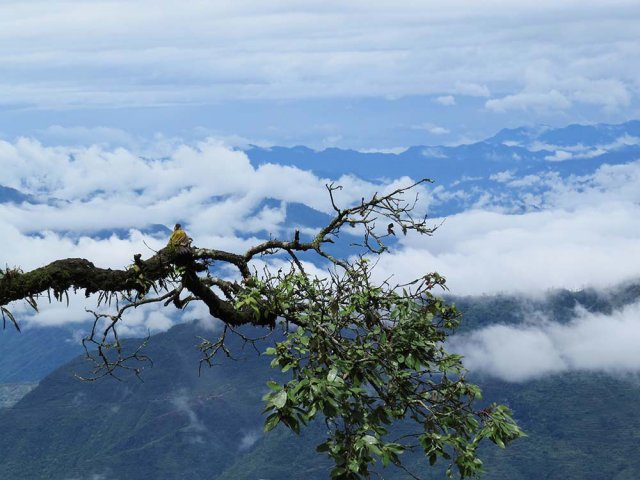
A quaint little hill town is hidden amidst Uttarakhand Garhwal Hills, Lansdowne is pristine and unpolluted, far from the chaotic pace of the city, located 5670ft above sea level. Renowned for housing the Garhwal Rifle Regiment of the Indian Army, Lansdowne is neither commercialized nor largely urban, making it a perfect sport for a break, peace and tranquillity. Encompassed by soaring snow-capped mountains and lush greenery everywhere you look, Lansdowne provides a lovely ambiance to attract tourists through the year. In terms of staying here, even though you can always book yourself at a hotel, but the real enjoyment of the place is best experienced by staying in the guest houses at the military cantonment, which resonate the atmosphere of the colonial era tremendously, in addition to picturesque views of the valleys.
Off the list of places to see at Lansdowne, Tiffin Top/ Tip-n-Top is a hilltop which offers magnificent views of the misty Shivalik range, surrounded by lofty oak & pine forests as also glorious sights of the sunrise and the setting sun. Bhulla Taal, an artificial lake, a bit further from the hilltop is the perfect place to sit back and enjoy the fresh mountain air, not to forget revel in bird watching or boat rides. Hawaghar is another hilltop, where not only can you feel the cold mountain breeze but witness the stunning sights of the snow-capped Himalayan Mountains. Get familiar with the town’s history by visiting the Garhwali Mess, one of the oldest British buildings in the area, now governed by the Indian Army, offering a realistic view into the country’s post-independence past. Other points of interest in Lansdowne include St. Mary’s Church, St. John’s Church and the Garhwal Rifles Regimental War Memorial. Lansdowne is also popular for its Garhwali cuisine and the local delicacies Phaanu, Kulath ki Dal and Kafuli are a must-try!
Pahalgam, Jammu & Kashmir

Encompassed by lush greens and the captivating Himalayan Ranges , Pahalgam is a treat for sore eyes and beacons for moments of calm and solitude at nature’s abode. The awe-inspiring opulence of this beautiful place strikes you the moment you arrive here, with sights of little houses, saffron farms and acres of green fields, with glorious valleys. Whether you go on a hike or take a fishing trip, enjoy golf at the 18-hole golf course amidst the snow-capped surroundings of Pahalgam, your visit would be an experience you’ll cherish for long. Abundant with mesmerizing sceneries, Pahalgam is popular for its diverse flora and fauna and you can enjoy long walks through the jungles, exploring its rich variety, surrounded by the Pine Forests that add to the glory of the place. The Sheshnag Lake’s a wonderful spot owing to its turquoise blue waters, snow-covered at that till June. You will enjoy camping at the Panchtarni where 5 streams meet, giving you the experience of a lifetime.
You can also indulge in a variety of outdoor activities in Pahalgam, like trekking the Kolahoi Glacier through a beautiful village Aru, where the villagers offer sledding on the frozen glaciers or enjoy skiing, trout fishing along the long river stretches and more! Pahalgam nurtures a subtle freshness in its cuisines with a touch of unique with its offerings of Matschgand (meatballs in spicy red curry) or Kaanti (lamb pieces in red hot gravy), with other popular dishes like Muji Gaad (fish with radish) or Nadir-Haaq (lotus stem cooked with spinach).
Wayanad, Kerala

Complete with sparkling waterfalls, ancient caves, homestays and comfortable holiday resorts, Wayanad is renowned for its wildlife and spice plantations. Considered one of the most beautiful towns in Kerala, Wayanad borders Tamil Nadu and Kerala and is set amidst lush greenery with hilly regions and wildlife that includes Tholpetty, Muthanga, Kalpetta, Mananthvadi to Sulthan Bathery on the north, the east border with Tamil Nadu, South, north-west and east respectively.
Wayanad is home to the Wayanad Wildlife Sanctuary where the White-rumped Vultures dwell. The Sanctuary is an integral part of the Nilgiri Biosphere Reserve and the protective regions of Bandipur, Nagarhole and residence to jungle cats, civet cats, panthers, peacocks, monitor lizards, babblers, woodpeckers, cuckoos, tigers, deer and wild dogs. The greenery of dense forests with its accompanying flora leads to flourishing fauna in the region. You will also find the Blue Beard bee-eater, which is the world’s largest bird eater here. Enjoy trekking amidst some jaw-dropping locales of the Western Ghats that include treks to Chembra Peak-a natural heart-shaped lake, Lakkidi viewpoint also known the Gateway to Wayanad, the Eddkkal Caves and the Neelimala Viewpoint (popular for the Meenmutty Falls).
Bonus Tip: Essential Monsoon Packing Tips

Indian Monsoons are a much-awaited event as the entire country expects relief from the excruciating heat spell of the summers. Despite the woes of the weather that the monsoon may bring with it, most people plan their holiday during this time, which not only attracts the best of nature to enjoy but also significant travel deals! While travelling during the monsoon season, it is best to pack according to the seasonal requirements. Here are a few tips to help you with Monsoon Packing.
- Pack a heavy duty Umbrella, as it may get quite windy during the monsoons, in addition to a Long Trench style Raincoat.
- It is best to carry synthetic clothes as they dry quick, some knee length pants in dark colors to avoid getting the bottom of the pants wet or hiding any mud splashes.
- Include wet weather footwear like rubber sandals or flip flops, wellington boots or gum boots. Avoid carrying canvas shoes or sneakers as they get ruined easily.
- A medical/first-aid kit is essential complete with antibiotics, disinfectant scrubs, adhesive bandages and your usual medication (if any).
- Some other essentials to carry should include small absorbent hand towels, a small waterproof bag for change of clothes, should you get caught in the rain, a plastic case or cover for your phone, camera, wallet and other essential items, a hairdryer to avoid catching a cold from wet hair, a mosquito repellant & net if you’re booked at budgeted places, where avoiding mosquitoes is challenging.
-
 Embark on a Journey to Discover India. Your Guide to the Best Places to Visit in India in Every Season (2020)
Embark on a Journey to Discover India. Your Guide to the Best Places to Visit in India in Every Season (2020)
-
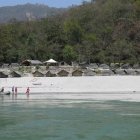 Lose Yourself in the Wild Beauty of River Ganges the Right Way by Camping at Rishikesh: 10 Campsites for an Adventurous Camping Experience!
Lose Yourself in the Wild Beauty of River Ganges the Right Way by Camping at Rishikesh: 10 Campsites for an Adventurous Camping Experience!
-
 Booze, Beaches & Nightlife, But There's One More Thing for Which Goa is Famous for(2020): Must-Try Water Sports in Goa for a Thrilling Experience! (2020)
Booze, Beaches & Nightlife, But There's One More Thing for Which Goa is Famous for(2020): Must-Try Water Sports in Goa for a Thrilling Experience! (2020)
-
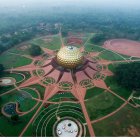 Looking for a Calm and Peaceful Vacation in Complete Harmony with Nature? Visit Auroville Pondicherry – The City of Dawn (2020)
Looking for a Calm and Peaceful Vacation in Complete Harmony with Nature? Visit Auroville Pondicherry – The City of Dawn (2020)
-
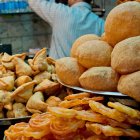 Set Your Taste Buds Tingling with a Visit to Bangalore's Food Street: Our Guide to the Ultimate Street Food Destination(2020)
Set Your Taste Buds Tingling with a Visit to Bangalore's Food Street: Our Guide to the Ultimate Street Food Destination(2020)
Pack Your Bags for an Amazing Monsoon Trip in 2019, and Visit These Picturesque Locations
Monsoon is a boon for India. Despite bringing the mercury down, it also lets greenery flourish and birds and animals to thrive. Hence, it is necessary to choose a travel destination which brings you closer to nature. So choose among these places and have a fun-filled monsoon!

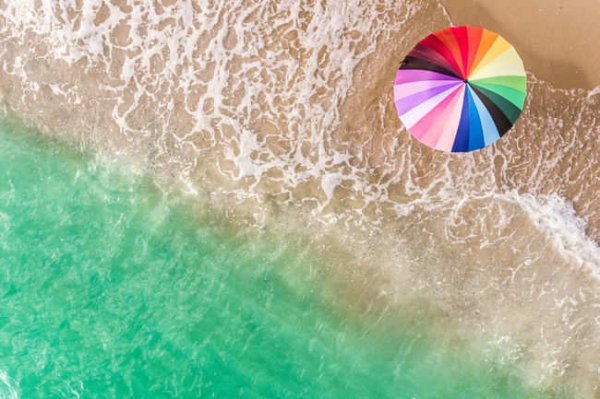
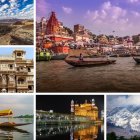

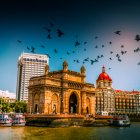



 Highlight the Best Facets of Your Incomparable Beauty: Discover the Best Face Highlighter Currently Available in India and Everything You Need to Know About Using Face Highlighters for Maximum Effect (2023)
Highlight the Best Facets of Your Incomparable Beauty: Discover the Best Face Highlighter Currently Available in India and Everything You Need to Know About Using Face Highlighters for Maximum Effect (2023)
 Forget the Blemishes and Get that Picture Perfect Flawless Radiance on Your Face: Check out the Best Foundations for Oily Skin Currently Available in India and Everything You Need to Know About Makeup Foundations (2023)
Forget the Blemishes and Get that Picture Perfect Flawless Radiance on Your Face: Check out the Best Foundations for Oily Skin Currently Available in India and Everything You Need to Know About Makeup Foundations (2023)
 Make Your Presence Felt Wherever You Go: Discover the Best Perfumes Under 2000 for Both Men and Women to Announce Your Arrival and Make Any Occasion Memorable (2023)
Make Your Presence Felt Wherever You Go: Discover the Best Perfumes Under 2000 for Both Men and Women to Announce Your Arrival and Make Any Occasion Memorable (2023)
 Protect Your Oily Skin from the Harmful Rays of the Sun: Discover the Best Gel Based Sunscreens for Oily Skin and Everything You Need to Know Before Buying One (2023)
Protect Your Oily Skin from the Harmful Rays of the Sun: Discover the Best Gel Based Sunscreens for Oily Skin and Everything You Need to Know Before Buying One (2023)
 Minor Blemishes and Wrinkles Affecting Your Confidence? Check out the Best BB Creams to Conceal Your Worries and Nourish Your Skin to Restore the Healthy, Radiant and Glowing Complexion Back Again (2023)
Minor Blemishes and Wrinkles Affecting Your Confidence? Check out the Best BB Creams to Conceal Your Worries and Nourish Your Skin to Restore the Healthy, Radiant and Glowing Complexion Back Again (2023)
